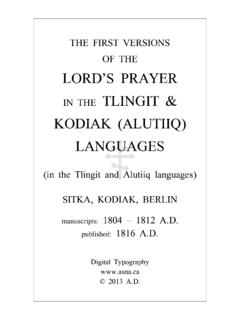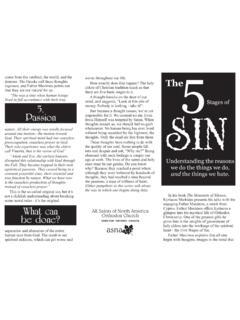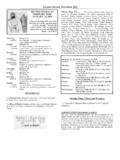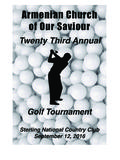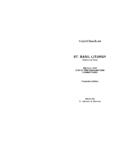Transcription of A Guide for Readers in the Orthodox Church - All …
1 A Guide for Readersin the Orthodox ChurchFather Geoffrey Korz+A Guide for Readersin the Orthodox ChurchThis small book is written with the purpose of providing some smallguidance to the prayerful exercise of the duties of a reader in theChurch. The holy order of the reader upholds the spiritual responsibility forthe care of the spoken words or Holy Scripture. In societies wheremost people are unable to read the Scriptures, the office of theReader provides the most regular exposure to the Word of Godoutside the Gospel and Epistle readings. In societies where literacyhas flooded the human heart and mind with disharmony, noise, andconfusion, the sacred responsibilities of the reader are even morecritical, since by the prayerful and holy exercise of his ministerialresponsibilities, the reader offers the Holy Scriptures as a correctingbalm, and a healing of the spiritual hearts of the is a critical and sacred responsibility, which cannot beundertaken lightly without being an offense to Christ.
2 Undertakenwith humility, care, and love, the order of the reader is a greatblessing to the faithful of the Church , and to the salvation of the soulof the reader this book is written primarily with the tonsured reader inmind, much of its contents are applicable for the lay reader in aparish or monastery Our Lord Jesus Christ bless, through the use of this book,those who labour in His Holy - The FoundationsThe foundation of the life of a reader must be prayer and HolyScripture. On his tonsuring, a reader takes a vow to read thescriptures every day, that his heart may be shaped by the words ofChrist, and not by mere externals of with reading, a reader s life must be immersed in rank of reader is the first rank of the priesthood, and it sharesin the common work of the priesthood: to pray for the needs of reader should prepare himself for service in the Church throughdaily prayer.
3 The daily use of the following prayers is not onlyspiritually edifying, but is also essential in building up the necessaryskills to read in Church . As a beginning, the following prayers should be known by heart,and easily repeated without use of the written Trisagion Prayer from O Heavenly King through tothe end of O Come, Let Us Worship , including theirabbreviated notation in the liturgical text (see the section Abbreviations , below) Theotokion, It is Truly Meet . The Troparion of Pascha, Christ is , used inplace of O Heavenly and at other times during thePaschal is advisable to stick with the version you have committed tomemory, regardless of what the text in front of you says.
4 Using avariety of texts is disruptive to both personal familiarity andmemory, as well as to the familiarity that allows one to pray fromthe heart with reader must also be familiar with the following - this refers to the melody used during a particularweek. There are eight tones; the tone of the week in to befound on most Church calendars. Other tones are also usedfor various and KONTAKION - these refer to specialhymns used for every feast day. Each feast day, and eachsaint, has their own troparion and kontakion (they come in sets of two; the troparion is almost always sung first).
5 Despite the fact that there are thousands of troparia andkontakia, they are all sung to one of the eight tones; thus,while the words change, the music remains the reader must also be familiar with the following books, used inthe HOROLOGION (Book of the Hours): This containsthe services of the Hours, as well as the Troparia andKontakia for certain feast days, as well as other services, andsometimes short lives of the saints and descriptions of thefeast. (A full version is often called The Great Horologion).This will be used every EPISTLE (or APOSTOL). This book contains thereadings from the Epistle for every day of the year.
6 At theback of the book, the appropriate Prokemena and Alleluiaverses are also listed. The reading for the day and theProkemenon/Alleluia should be marked separately. This willbe used every MENAION (Book of the Months): This contains theweekly verses for Vespers and Matins for particular saintsand feasts. It usually comes in twelve volumes. This willusually be used exclusively by the choir or LENTEN TRIODION: This book contains theverses for all the services of Vespers, Matins, etc. from thefirst Sundays approaching Pascha, right through Great Lent,Holy Week, and Holy Pascha itself.
7 It will be thoroughlyused during this season, and not used at all the rest of PENTECOSTARION: This contains the Tropariaand Kontakia, as well as the Vespers and Matins verses forthe services from Pascha to Pentecost. It will be thoroughlyused during this season, and not used at all the rest of of Liturgical BooksThe reader has the primary responsibility for the physical care ofliturgical books. Most liturgical books are crafted with solidconstruction, offering a long lifetime of use, provided the books aregiven proper care. The following points should be of the Holy Scriptures should be placed only on thetop of any pile, and at the right end of any shelf for reflects pious reverence for the Scriptures, as well asease of access that should be a natural part of Orthodox The pages of liturgical books should only be handled withclean care should be taken to avoid folding or crumpling thepages of a liturgical book.
8 In transporting a book, thisinvolves either transporting the book flat, inside a hard the book must be transported in a soft sided case invertical position, it should be placed spine down, withnothing on top, ideally with other books on either side toensure it stays closed. A ribbon or tie around the book canbe sued to secure the book to prevent it falling open,although care must be taken to avoid damaging the of a ReaderAs the first rank of the clergy, a reader should conduct himself withthe humility, sobriety, and care appropriate to his order. Outside theChurch, a reader should exercise care to speak and act withChristian love and dignity, and to avoid activities that even give theappearance of behaviour unbecoming to a member of the clergy,such as drinking to excess, riotous laughter and parties, andfrequenting places of a dubious or sinful character.
9 In all thesethings, a reader should exercise modesty in his decisions, reflectingon his own sins alone, never giving even the appearance ofcondemning a reader would ideally wear clerical attire at all times, it is atminimum necessary that a reader should wear a cassock on Churchgrounds, and at any Church functions off Church grounds. Clothingwon beneath the cassock should be clean and neat, and avoidpatterns or bright colours (black or white shirts are ideal; dark pants,shoes, and socks are appropriate).It is not appropriate to wear shorts or ties under a cassock at anytime.
10 (Saint John Maximovich used to send out of the altar anyonewearing a tie under his vestments: he argued that ties were items offashion, too frivolous for the Church , and that they resembled thenoose with which Judas took his own life).Cassocks should be laundered at least every few weeks; they arean article of clothing, not a coat, and should be treated with thedignity that marks them as the garment of a member of the clergy. II - In and Around the ChurchThe Church is the Temple of God: it is not a theatre, a racetrack, agymnasium, or a legion hall. As such, certain behaviour is properand becoming in Church , which may require an initial and extraeffort necessary to form a habit of movements within the Church are purposeful.

